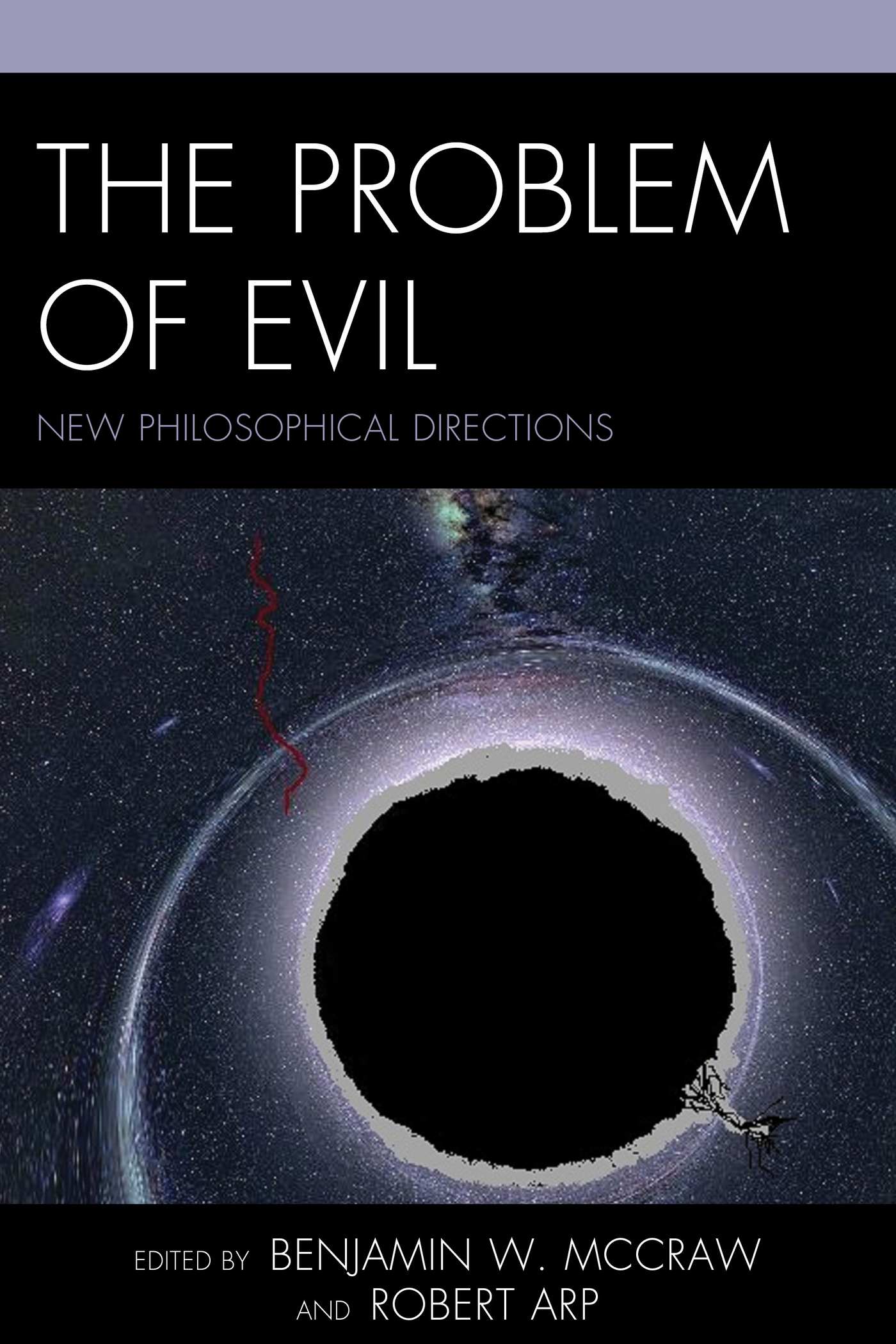The Problem of Evil
The Problem of Evil
New Philosophical Directions
Edited by Benjamin W. McCraw
and Robert Arp
LEXINGTON BOOKS
Lanham Boulder New York London
Published by Lexington Books
An imprint of The Rowman & Littlefield Publishing Group, Inc.
4501 Forbes Boulevard, Suite 200, Lanham, Maryland 20706
www.rowman.com
Unit A, Whitacre Mews, 26-34 Stannary Street, London SE11 4AB
Copyright 2016 by Lexington Books
All rights reserved. No part of this book may be reproduced in any form or by any electronic or mechanical means, including information storage and retrieval systems, without written permission from the publisher, except by a reviewer who may quote passages in a review.
British Library Cataloguing in Publication Information Available
Library of Congress Cataloging-in-Publication Data
McCraw, Benjamin, 1984 editor.
The Problem of Evil : New Philosophical Directions / Edited by Benjamin W. McCraw and
Robert Arp.
Lanham : Lexington, 2016. | Includes bibliographical references and index.
LCCN 2015040207| ISBN 9781498512077 (cloth : alk. paper) | ISBN 9781498512084 (electronic)
LCSH: Good and evil.
LCC BJ1401 .P7665 2016 | DDC 170--dc23 LC record available at http://lccn.loc.gov/2015040207
 TM The paper used in this publication meets the minimum requirements of American National Standard for Information Sciences Permanence of Paper for Printed Library Materials, ANSI/NISO Z39.48-1992.
TM The paper used in this publication meets the minimum requirements of American National Standard for Information Sciences Permanence of Paper for Printed Library Materials, ANSI/NISO Z39.48-1992.
Printed in the United States of America
Introduction
Robert Arp and Benjamin W. McCraw
The Nature of Evil
Evil has been, remains, and surely will continue to be, a fruitful and important topic for philosophical analysis and thought. This collection is composed of new essays centering on philosophical examinations of the existence, nature, and problem of evil. The chapters draw upon a wide variety of philosophical methodologies and positions, offering a diverse set of aims, views, and approaches. But what exactly is evil?
With cognates in the German bel and the Dutch evel, the English noun evil is derived from the Old English yfele, meaning harm, misfortune, damage, disease, ill, malice, misery, as well as that which is defective, cruel, wretched, wicked, and bad (Mackay 1877, 158; Hall 1894, 366; Onions 1966, 332). The Oxford English Dictionary defines the noun evil as profound immorality, wickedness, and depravity and something that is harmful or undesirable (http://www.oxforddictionaries.com/us/definition/american_english/evil), while the Merriam-Webster Dictionary defines it as that which is sinful, wicked, offensive, undesirable, and pernicious (http://www.merriam-webster.com/dictionary/evil). English speakers will look at these definitions and, at first blush, likely agree with them as resonating with their experience.
The terms etymology and modern-day definition(s) notwithstanding, evil and its opposite, good, are probably among the most vague and ambiguous terms in the English language (van Inwagen 2006, 4). We can distinguish evil from the mere bad, but it is far from obvious just how much commonality we find in the terms usage, even amongst philosophers and other thinkers who have spilt much ink over it throughout human history. There are more than 25 different senses of the term used in the Bhagavad Gita, for example, which have been noted, discussed, and debated by scholars (Palshikar 2014). As Aristotle famously affirms of the notion of being in his Metaphysics, we might say that evil is said in many ways. Indeed, it seems as though we can only get as clear as something really bad as a rough and ready description of evil in general.
Philosophers usually say more about the nature of evil than it has to do with something really bad. Especially within the analytic tradition of philosophical theologyspecifically concerning the so-called problem of evil, discussed belowthe focus has been limited to instances of suffering or pain, including physical, emotional, psychological, and so forth. Nevertheless, this move identifying evil with pain is usually accompanied by a proviso that such an identification is only made for the sake of space, to limit the problem for discussion, or some other move clarifying that evil is taken, strictly speaking, to extend beyond suffering or pain alone (see van Inwagen, 2006).
In the history of Western philosophy and philosophical theology, two broad theoretical approaches to the nature of evil have been developed, what we will call nothing evil and something evil. Christian philosophers such as St. Augustine, St. Anselm, and St. Thomas Aquinas have advocated nothing evil.
Evil is like a metaphysical nothing thingto paraphrase Aquinas (1948, I.48.3)that results when goodness or existence is removed, like a moral or metaphysical hole; thus, our choice of the name, nothing evil. To say that something is evil is another way of saying it either lacks goodness or being, or is a lower order of goodness or being than what should have been or should be. In Davies (2001) words, evil signifies any kind of failure or shortcoming, anything we might think of as less than good (14; also Davies 2006). So, for example, life and limb are good things that are supposed to exist for embodied organisms; taking them (through human action, morally) or missing them (naturally, through disease or being born that way) is evil in that there is now a lacking and the entity is deprived of them. Further, to reach their fullest potential as rational beings (and not mere animals), humans are supposed to be virtuous (self-controlled, just, prudent, caring, knowledgeable), so any vice (self-indulgence, injustice, foolishness, wickedness, ignorance) is evil because it is a lack of virtuethat is, something one ought to have according to ones nature. Also, any kind of bad state of affairs, or pain, suffering, destruction, corruption, or deterioration is a lack of good or appropriate existenceideally, organisms should live cancer-free, for example, and cancer is the evil which deprives the organism of its normal physiological parts and processes. The example of evil as a privation that Aquinas uses in several works is blindness: a person should be born with sight, and this is a straightforwardly good thing for a person, so the lack of sight is an evil for that person (see 1927, II.1011; 1948, I.5.5, III.18.1; Davies 2001, 201).
To define evil in this nothing or negative way probably strikes the contemporary ear as strange since we normally think of evil as a metaphysically positive, something like a state of affairs that results in physical or psychological pain, suffering, distress, destruction, corruption, and/or deterioration of some kind. States like this, others suggest, really are elements of reality. We call this positive kind of evil something evil. Whereas negative, nothing evil can be thought of as a moral or metaphysical hole in reality, positive, something evil can be thought of as a moral or metaphysical blotch on reality.
In addition to the twofold distinction between nothing and something accounts regarding the nature of evil, philosophers commonly distinguish two types of evil; namely, natural or physical evil and moral or human-made evil. Standard cases of natural evil are natural disasters like tornadoes, floods, and earthquakes but include any phenomena that we dont take to come about via humans agency, like cancer or the actions of non-human animals (assuming they are not moral agents). Think of all of the humans and other beings capable of suffering who lose life and limb as a result of a disease, prenatal condition, genetic disposition, tornado, hurricane, earthquake, tsunami, or simply being in the wrong place at the wrong time during a natural disasterthese we consider evil that results from the worlds natural physical, chemical, and/or biological processes.
Next page
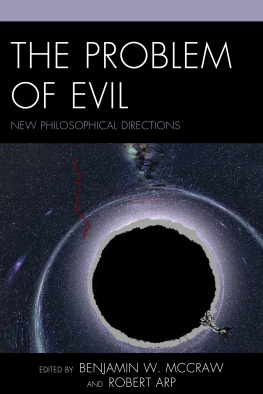



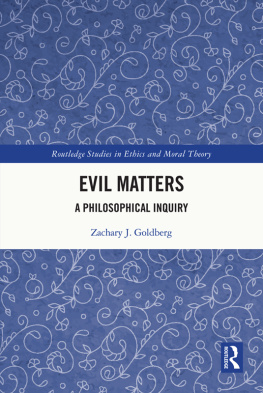

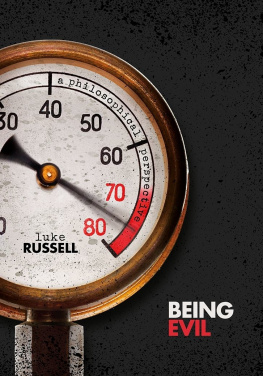

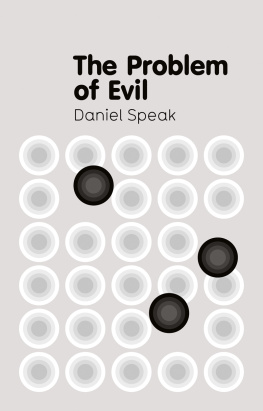
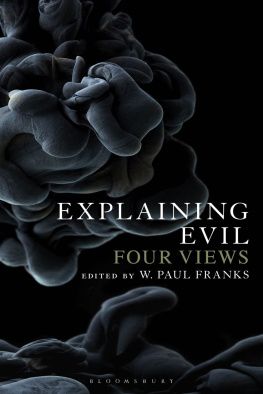
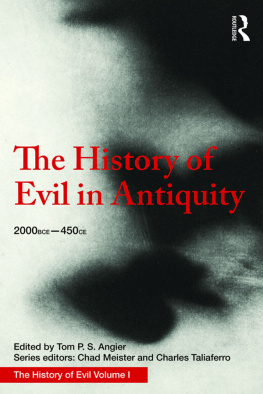
 TM The paper used in this publication meets the minimum requirements of American National Standard for Information Sciences Permanence of Paper for Printed Library Materials, ANSI/NISO Z39.48-1992.
TM The paper used in this publication meets the minimum requirements of American National Standard for Information Sciences Permanence of Paper for Printed Library Materials, ANSI/NISO Z39.48-1992.